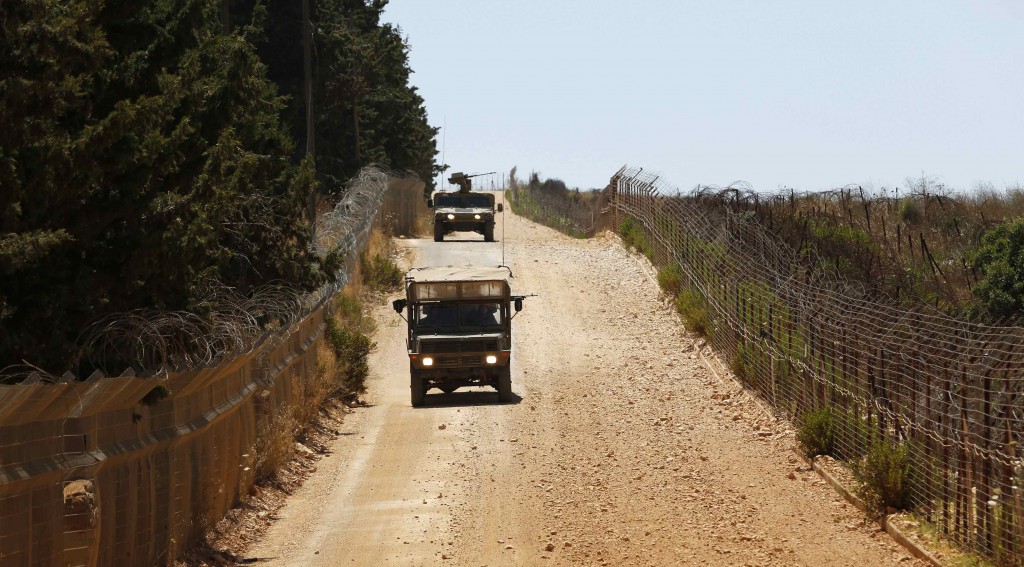IDF Bolsters Forces on Golan Heights

Israel is bolstering its forces on the once-quiet frontier with Syria where it believes Hizbullah terrorists are preparing for future attacks on Israel.
The Iran-backed terrorist group has sent thousands of its own fighters from neighboring Lebanon to combat Syrian rebels, according to Israeli and Western estimates.
Israel is worried Hizbullah is accruing valuable combat experience on the Syrian battlefield.
An Israeli source said the group is also gathering intelligence on Israel’s deployment on the strategic Golan plateau.
“It is not at an alarming level now but we understand their intentions,” said the source.
Hizbullah’s leader, Hassan Nasrallah, threatened in May to turn the Golan into a new front against Israel.
“Since Nasrallah’s threat, more [Israeli] army companies have been sent up, more tanks,” an Israeli military source at the Booster military outpost on the Golan.
“Hizbullah has an intelligence presence [in the Golan] that we know of.”
Booster is about a mile from a disengagement line set after Israel and Syria fought on the Golan in 1973, and Israeli tanks have just moved back into the position for the first time since then.
Daytime is peaceful on the rocky outcrop that gives a turret-top view of Syrian villages below, with birdsong echoing across sun-scorched fields. That changes at nightfall.
“Every night there is fighting [in the villages across the frontier], explosions and shooting all through the night. This is the hottest spot on the Golan Heights,” the source said. “As far as we’re concerned, any bullet that crosses over is intentional.”
Among the rebels fighting the Syrian army are jihadi and al-Qaeda-linked groups, which also pose a threat to Israel’s northern borders.
“We know they are busy now, but once it ends they will turn their guns on us,” said the military source.

“We have learned our lessons from Sinai,” the source said, referring to recent terrorist attacks on Egyptian soldiers and across the border at Israel.
“We’re not waiting for an attack [from Syria]. We’re building the border fence, we have sent up tanks, more regiments, field intelligence … and increased observations.”
Israel is particularly worried that Hizbullah will get hold of advanced weapons systems or chemical arms in Syria.
Foreign forces destroyed advanced Russian anti-ship missiles in Syria last week, rebels said on Tuesday — a disclosure that appeared to point to an Israeli raid. Israel has not confirmed or denied involvement.
The army has also deployed a high-tech surveillance system along the Syria front, which immediately zeroes in on
any suspicious movements approaching Israeli territory.
“It is critical for us to know who is sitting there — if it’s an Islamist jihadi or a rebel who just wants to defend his family,” the military source said.
Israeli military sources on the Israel-Lebanon border said that despite its deep involvement in Syria, Hizbullah has not loosened its grip on the border area in south Lebanon.
“Hizbullah’s legitimacy in the Arab world is cracking over its involvement in Syria,” said one source on the Lebanon border. “But on the other hand, if they come under a lot of pressure they could choose to ignite the border.”
Israeli commanders have noticed that Hizbullah has taken down some of its flags, as well as those of Iran, that once hung in the border villages, a sign it could be worried about its image.
This article appeared in print on page 1 of edition of Hamodia.
To Read The Full Story
Are you already a subscriber?
Click "Sign In" to log in!

Become a Web Subscriber
Click “Subscribe” below to begin the process of becoming a new subscriber.

Become a Print + Web Subscriber
Click “Subscribe” below to begin the process of becoming a new subscriber.

Renew Print + Web Subscription
Click “Renew Subscription” below to begin the process of renewing your subscription.












